Standing outside of Yurakucho Station in central Tokyo, I catch the white flash of a Shinkansen bullet train as it glides past on the tracks overhead in near silence. Every few minutes, like clockwork, another Shinkansen passes through Yurakucho, bearing hundreds of travelers between the capital and destinations all over Japan.
To my right stands Tokyo Kotsu Kaikan 東京交通会館, which from its exterior could be just another shopping plaza on the edge of Tokyo’s most famous shopping district, the Ginza. But like a mirror image of the Shinkansen across the street, the Kotsu Kaikan, in a small way, brings the rest of Japan to Tokyo. Inside, a cluster of six “antenna shops” from various prefectures of Japan busily cater to customers yearning for a taste of home.
What is an antenna shop?
To understand the importance of the antenna shop for those whose hometowns are elsewhere in Japan, one must first understand what the term “antenna shop” means. It is a shop that sells items, mainly food and beverages, from prefectures outside of Tokyo. In Western terms, we might call it a “satellite shop” though in America there is no direct correlation to any type of shop there. But for the homesick Tokyo resident craving a taste of their favorite comfort foods, antenna shops are a lifeline to home.
The concept of the antenna shop has been around for decades. My friend Ryuko, who worked 30 years for a major department store in Shinjuku, recalls that even when she started her job, department shops would hold special events for far flung Prefectures in Japan to highlight their meibutsu, or famous products. Back then, however, it was mainly Kyoto, Hokkaido, Fukui, and the island of Kyushu that were featured as these were the most popular locations for local Tokyoites. Eventually, the idea was born that these regions, prefectures or even specific cities should have permanent locations for people to shop in, and the antenna shop was born. Today in Tokyo, almost every region or prefecture has its own antenna shop somewhere in the city, some with multiple shops around the city.
Exploring Tokyo Kotsu Kaikan
If you want to get the most out of a day spent exploring various antenna shops, the best place to start is Tokyo Kotsu Kaikan on the east side of Yurakucho station which is easily accessed by the Yamanote Line. Six regions/prefectures have shops in this shopping plaza: Hokkaido, Osaka, Akita, Tokushima/Kagawa, Hyogo, and Wakayama.
Hokkaido is one of the most popular domestic tourism destinations in Japan, so it is no surprise they have a large, well stocked store that is constantly full of people. Since most of the dairy products produced in Japan are from Hokkaido, part of the draw is their ice cream counter. They also have a counter serving fresh deep fried foods like croquettes コロッケ made with Hokkaido potatoes.
Osaka is known as a foodies paradise in Japan, and their well stocked antenna shop boasts a variety of instant ramen, snacks, and even nostalgic merchandise featuring Fueki-kun.
One nice touch of the Osaka shop is that about half of the shop is used as a small restaurant serving Osaka style favorites including takoyaki たこ焼き, possibly the most delicious way you can imagine to burn your tongue. From outside the shop, you can watch the employees making these little treats through the window.
The Akita, Wakayama, Hyogo and Tokushima/Kagawa (two neighboring prefectures sharing a shop) shops are smaller and might just resemble small grocery stores if you didn’t know better. But look closely at the merchandise and you’ll find meibutsu 名物, the specialty foods of the region that everybody must try when they visit. At the Akita shop, you can even get an entire kit to make kiritanpo nabe, a hot pot prepared with pounded rice sticks, made only in Akita.
One disappointment about these antenna shops is the fact that none of these six shops is particularly geared for foreign tourists. English speaking staff are few, and deciphering many of the products is tricky even for someone with a modest understanding of Japanese foods. Only the Tokushima/Kagawa shop had any brochures about the prefectures the shop represents, and even then they were only in Japanese. To their credit, one of the ladies in the shop could speak some English and helped recommend some Tokushima meibutsu (dried seasoned seaweed) and told me about the best things to see if I visit the area (the Naruto whirlpools and the Tokushima Awa Odori festival). But overall, this represented a huge missed opportunity to introduce some of these lesser known prefectures to foreign tourists.
But then again, these are some of the smaller antenna shops in Tokyo. Perhaps if I visited some of the larger shops, there would be more and better services for foreign tourists. There was only one way to find out.
Crossing Into Ginza: The Big Antenna Shops
Fortunately, I needed to do nothing more than to walk a hundred meters east of Kotsu Kaikan, on the opposite side of Sotobori-dori to reach the antenna shop of Ishikawa Prefecture 石川県, which is stylish enough to remind you that you are indeed now in Ginza. Unlike the previous small shops, the Ishikawa antenna shop occupies a full three floors of a building and includes a dining counter where you can sample cuisine made from fresh Ishikawa products.
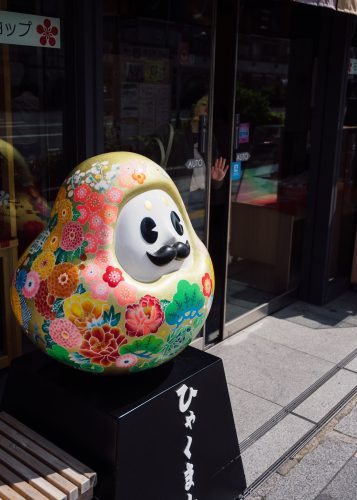
The top floor houses an abundant collection of local crafts and a service counter for tourism information. Could Ishikawa be the prefecture reaching out to English speaking tourists? I approached the counter with great expectations.
Unfortunately, what I got was a mixed bag. After disappearing into the back room, the service agent emerged with a variety of English language brochures about Ishikawa Prefecture and the city of Kanazawa. However, he apologized that he was unable to converse in English and only sometimes did the shop have English speaking staff available. Still, he eagerly invited me to visit his prefecture in Japanese, so I must give him credit for his enthusiasm.
A few steps away, the Okinawa 沖縄 antenna shop beckons you with its cute and slightly odd mascot statues and an unusual soundtrack that fuses Hawaiian, Japanese and Disney tunes. Inside you will not find a tourism service counter, but there is a nice selection of distinctly Okinawan foods including several species of Spam, taco rice mix, and an ice cream counter selling purple yam soft cream.
The Hiroshima 広島県 antenna shop is another large multi-story shop which attracts quite a crowd with a selection of foods that even people not from Hiroshima love. Setouchi lemons are one of Hiroshima Prefecture’s meibutsu, and there are a variety of foods using lemons as a flavoring.
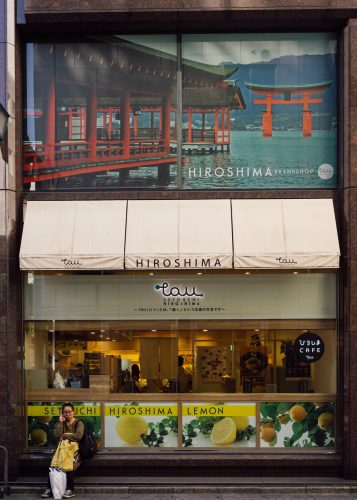
The second floor is split between a fashionable cosmetic shop selling local cosmetics, a liquor corner with a sake tasting bar, a huge collection of Hiroshima Carp baseball goods, and wait… another tourism counter.
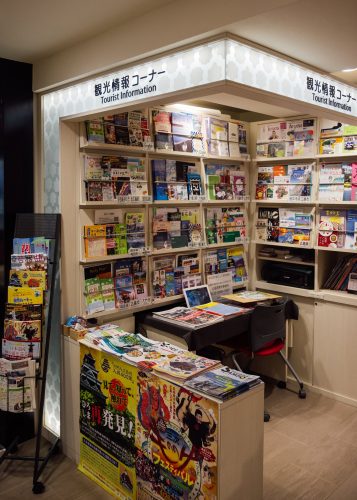
This counter was unstaffed when I visited, but to their credit, on the top shelf of the brochures, they had labeled an entire English section of interesting things to in the Hiroshima area. I helped myself to a brochure about cycling the Setouchi Shimanami highway and a few others.
Neither the Yamagata nor Kochi prefecture shops have staffed tourism counters, but each has an outstanding selections of goods representing what they have to offer. Yamagata 山形 has a fine selection of fresh and preserved vegetables, some of them found growing wild in the mountains. For lovers of the Japanese yuzu 柚子 (citrus), Kochi 高知 has one of the largest selections of yuzu related foods I have ever seen in one place. It also has katsuo (bonito fish) in a variety of forms, including whole chunks for those who prefer to shave the flakes themselves to make a fresh dashi (broth base for many Japanese dishes). If you have trouble locating the Kochi shop, look for the cool life-sized statue of local hero Sakamoto Ryoma outside the front door.
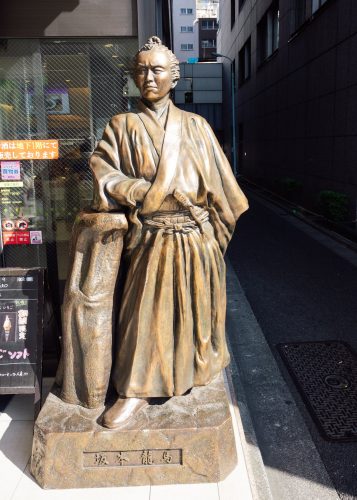
Alas, these five larger antenna shops in Ginza also left us wanting for English speaking help. Though a couple of them had English brochures, none had English speaking staff on hand, at least any who were easily identifiable. Undeterred, I decided to press on, hopping on the Ginza line train a few stops to Mitsukoshi-mae Station, where a few more antenna shops were clustered.
Mitsukoshi-Mae and the Nara Antenna Shop
Unlike Ginza, which has a distinctly Western vibe from its long history of Western influence, Mitsukoshi-Mae and nearby Nihombashi were literally the center of the Japanese universe during the Edo Period. Nihonbashi was the meeting point of the five great highways that connected all the regions of Japan, making it the most important point of commerce in the country. Today, the area retains a subtle Edo era feel to it, with many shops catering to the traditional Japanese arts and crafts.
Which of course makes it the perfect location for the Nara antenna shop. Nara was the first capital of Japan and contains some of the most important buildings and cultural treasures of Japan’s long history. The Nara shop is modern and stately, yet has obvious nods to its historic roots.
Unlike many antenna shops which focus mainly on food products, the Nara shop is well balanced between foods and local products and crafts. And in a highly visible location, it also contains a service desk, which not only provides English speaking materials and consultations about Nara Prefecture, but the staff can also help explain some of the products on sale in the shop. Finally, I discovered the shop that is exercising the true potential of an antenna shop: a place that promotes its region to foreign visitors and locals alike.
And this is really important to Nara, which has been unjustly relegated in travel guides as simply a day trip from Osaka or Kyoto, when in truth, the prefecture, like its antenna shop, holds so much more potential than that. As I learned from chatting with the service staff, there is much more to do than feed the deer and wonder at the 1,200 year old Todaiji Temple. Nara is a paradise for those who love nature, both in hiking and cycling, and it hosts some extraordinary festivals throughout the year.
The Verdict: Not Quite Ready for Foreign Tourists
With the notable exception of Nara Prefecture, I found that none of the antenna shops I visited were truly prepared to handle English speaking tourists. Only a handful had information about their Prefecture in the shop and fewer still had brochures in English. Many of the products sold in the stores require some explanation and few staff members are able to speak English well enough to help.
Still, it would be incorrect to say visiting antenna shops is a complete waste of time for English speaking visitors to Tokyo. If you know what you are looking for and where a product comes from, often antenna shops are the easiest places to find regional products. And for the adventurous or those looking for unique souvenirs, antenna shops can be real treasure houses.
Having visited several prefectures around Japan, I was able to purchase some hard-to-find items at the various shops I researched. The Hokkaido shop stocks a good selection of Royce chocolates, including a box of caramel milk and creamy white chocolate wafers. From Osaka, a nostalgic tin of Fueki hard candies and takoyaki flavored beans that go great with a cold beer. The staff at the Tokushima shop recommended seasoned nori (dried seaweed) as their most popular item, and at the Hyogo shop, the seasonal best seller is a jar of hotaru-ika, firefly squid, to be eaten with rice. Little bottles of peach, plum and yuzu liqueur caught my eye at the Nara shop and I had recently run out of inaniwa udon from Akita, so I was happy to be able to replenish my stock of these delicious noodles.
On my second research trip, I chose green tea salt and blue sea salt from the multitude of salts offered at the Okinawa shop. I purchased one of several artisanal-made soy sauces from the Ishikawa store and a lemon ginger base to make hot or cold beverages from Hiroshima. Kochi was one of my favorite shops because I love the taste of yuzu, and I found an unusual little bottle of yuzu powder that can be used to season…well whatever you want, with that zesty flavor of yuzu.
A Special Note for Sake Lovers
Even if most antenna shops are not yet ready to support the needs of English speaking tourists, if you are a lover of sake, you simply cannot pass up visiting some of these shops. Shops representing Nagano, Ishikawa, Hiroshima, Toyama, and Gunma have tasting counters which allow you to sample a flight of sake before you commit to purchasing one. The Shiga shop in Nihombashi is notable for having a tasting bar with all 28 types of their sake to sample. The Akita shop mentioned above stocks a huge selection of Akita sake, some of the finest in the country. In fact, nearly every shop stocks a variety of local sake and other alcoholic beverages. Obviously, it would be very expensive and time consuming to travel around the country tasting the sake of the various prefectures, so antenna shops are a great way to sample a large variety within a relatively small neighborhood.
Finding Tokyo Antenna Shops
Oddly enough, I picked up a printed brochure of all 41 Tokyo antenna shops but there is no corresponding English website available. You can visit the Japanese website and translate it, or head over to Bento.com where they keep a fairly comprehensive list with maps. I recommend starting at the Tokyo Kotsu Kaikan next to Yurakucho station and working your way east over to Ginza. If you still have an appetite for more, take the Ginza Line train a few stops to Mitsukoshi-mae Station and find a few more excellent shops including our star pick, Nara’s Mahorobakan.
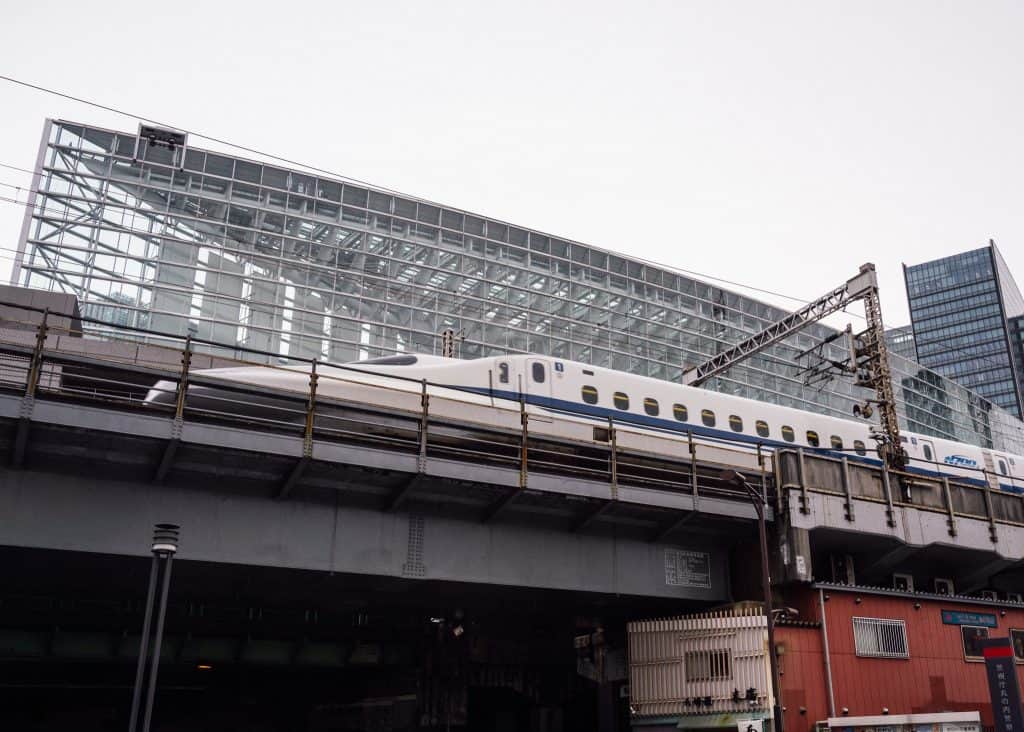
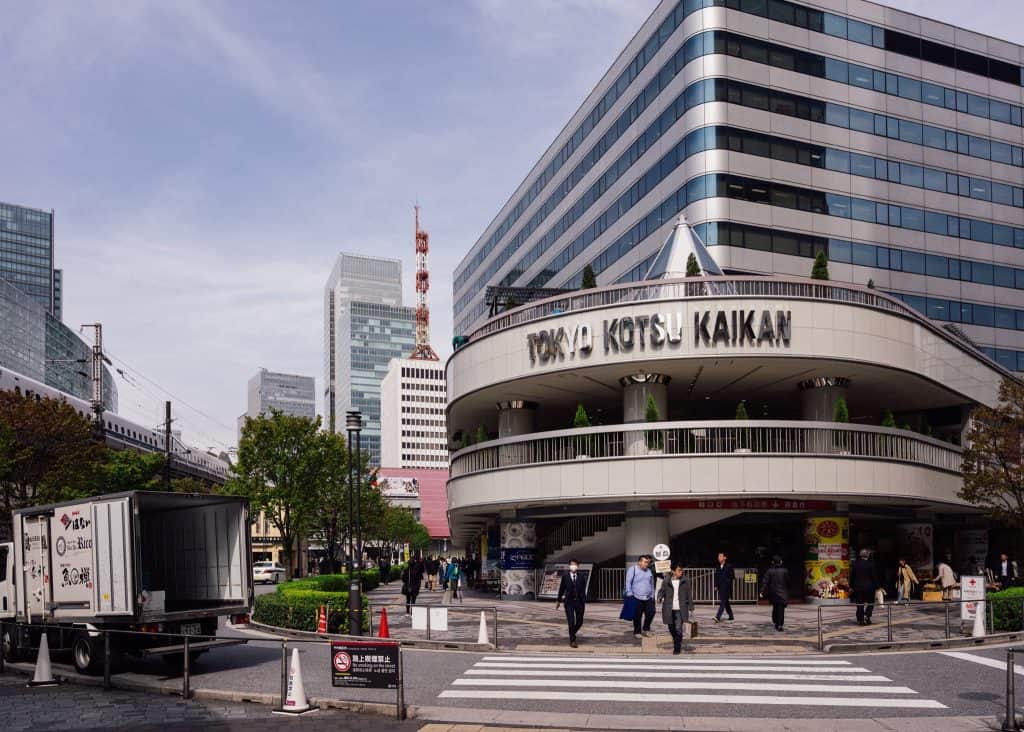
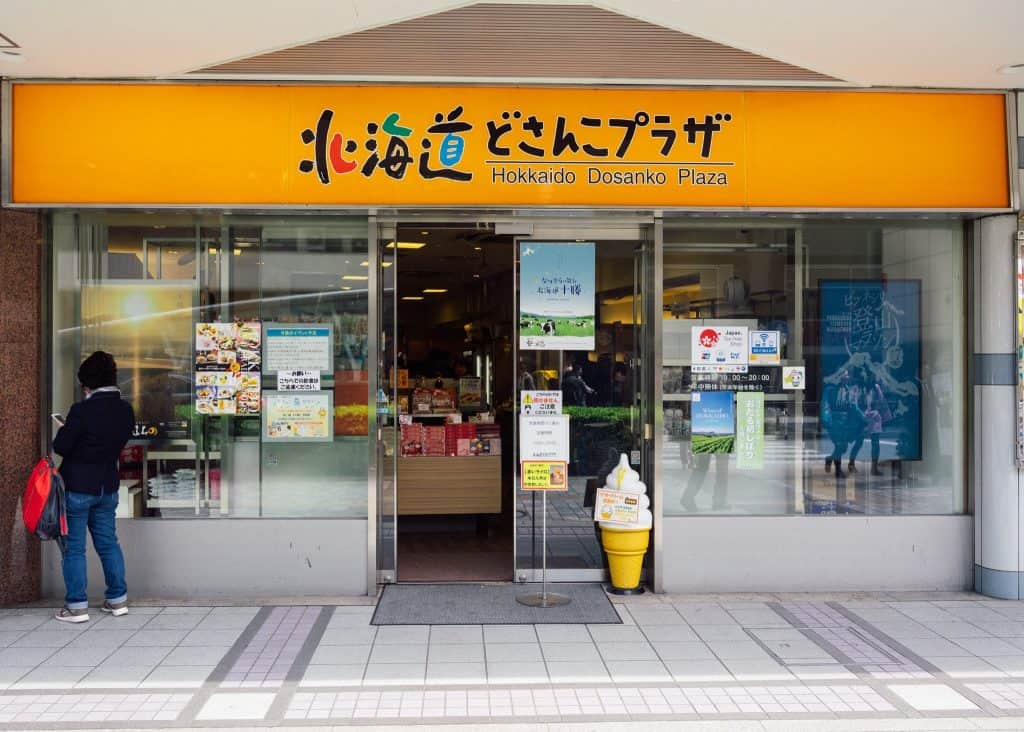
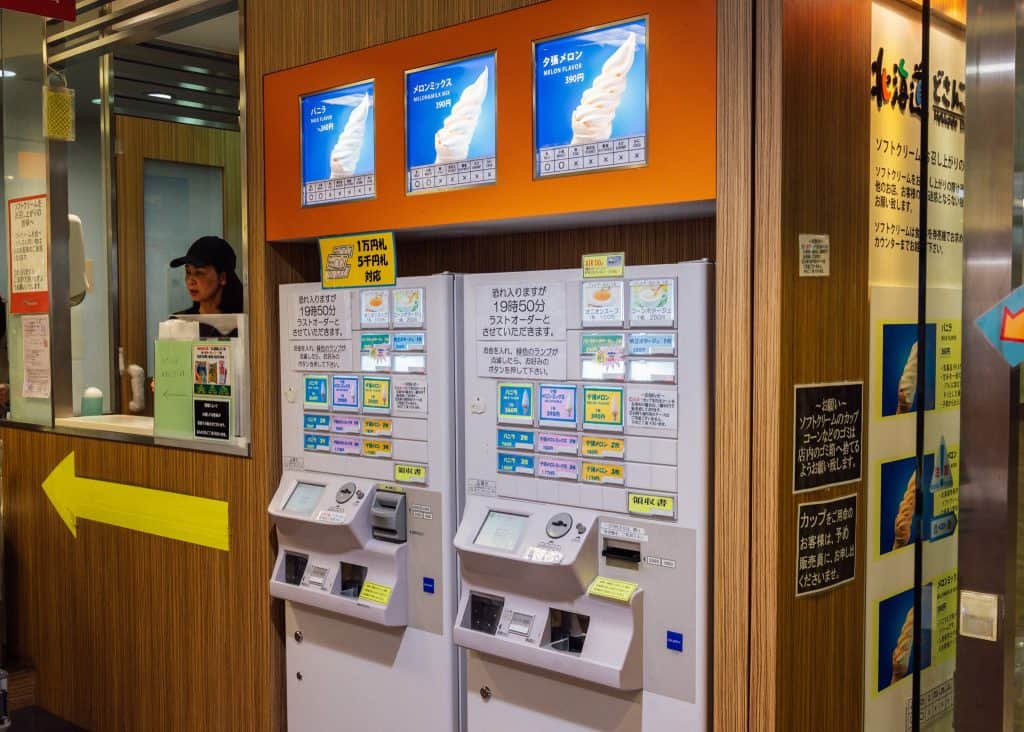
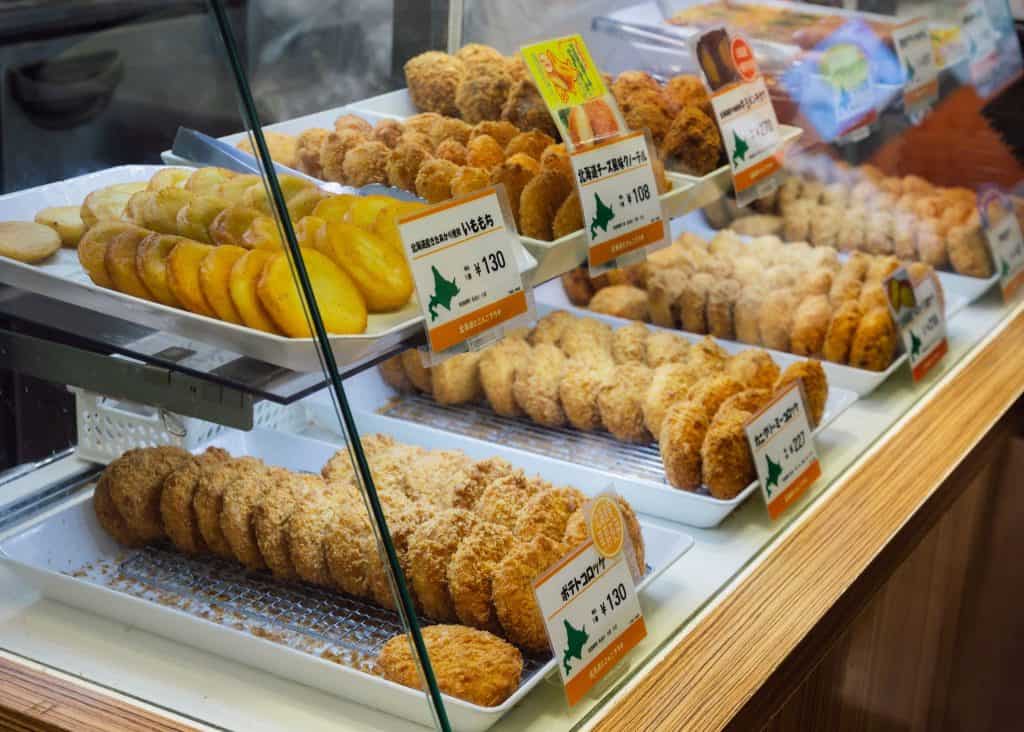
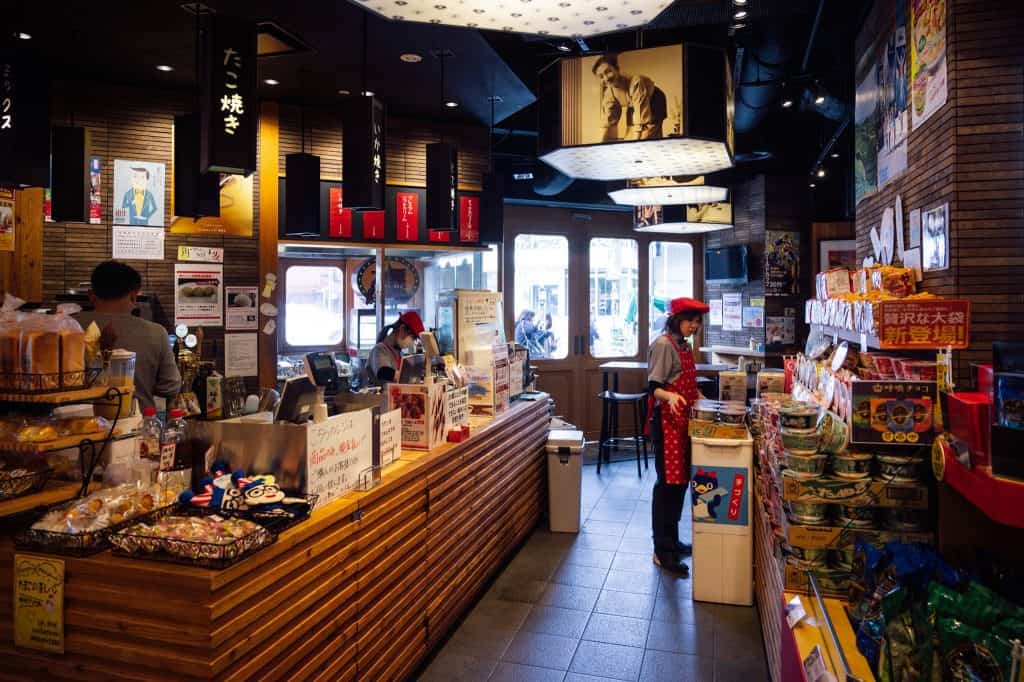
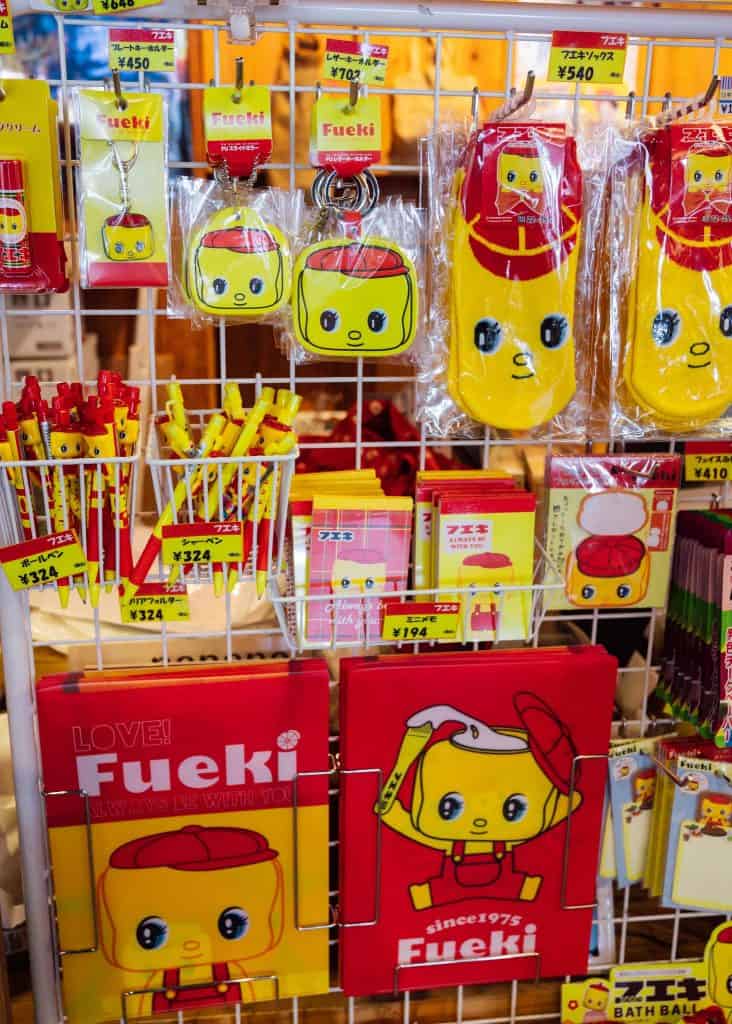
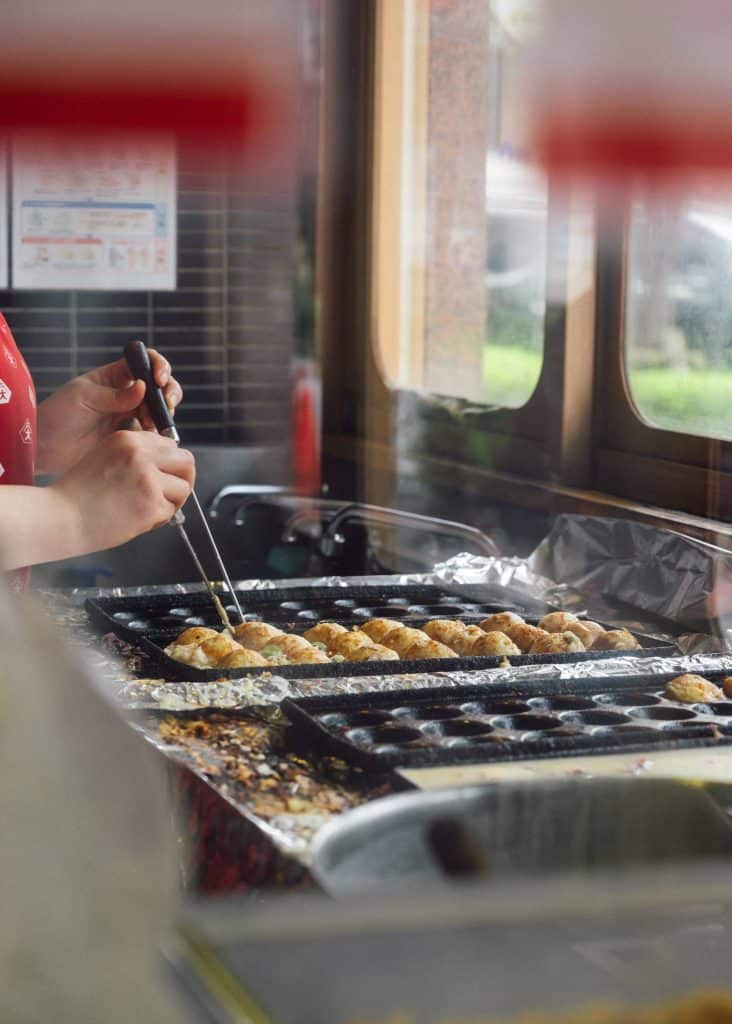
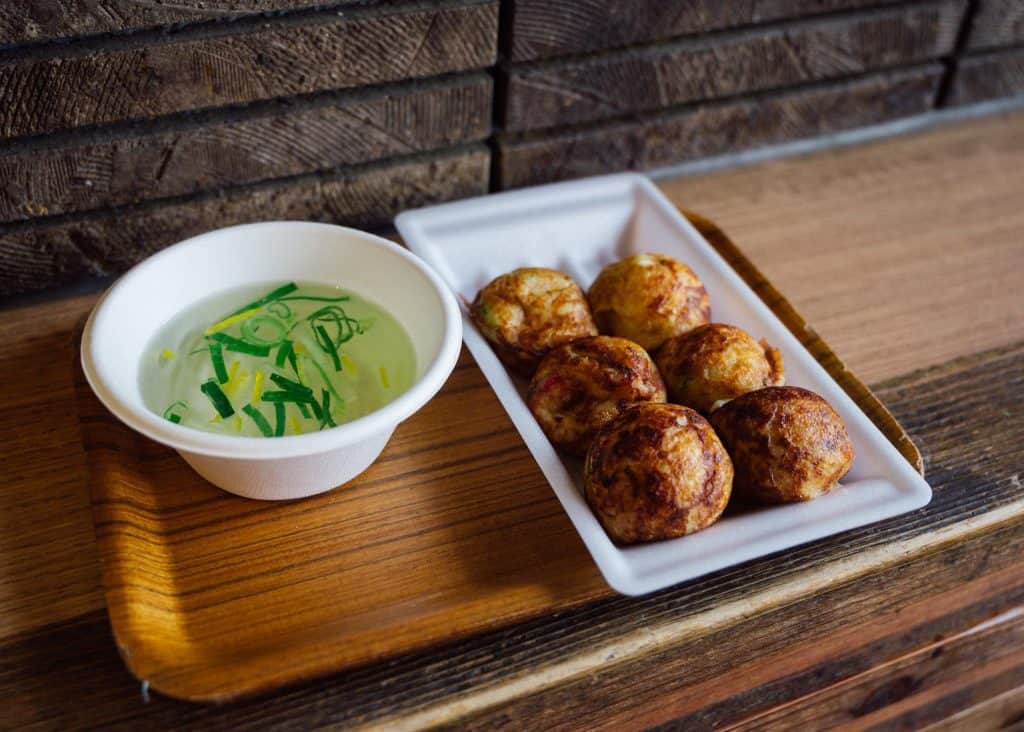
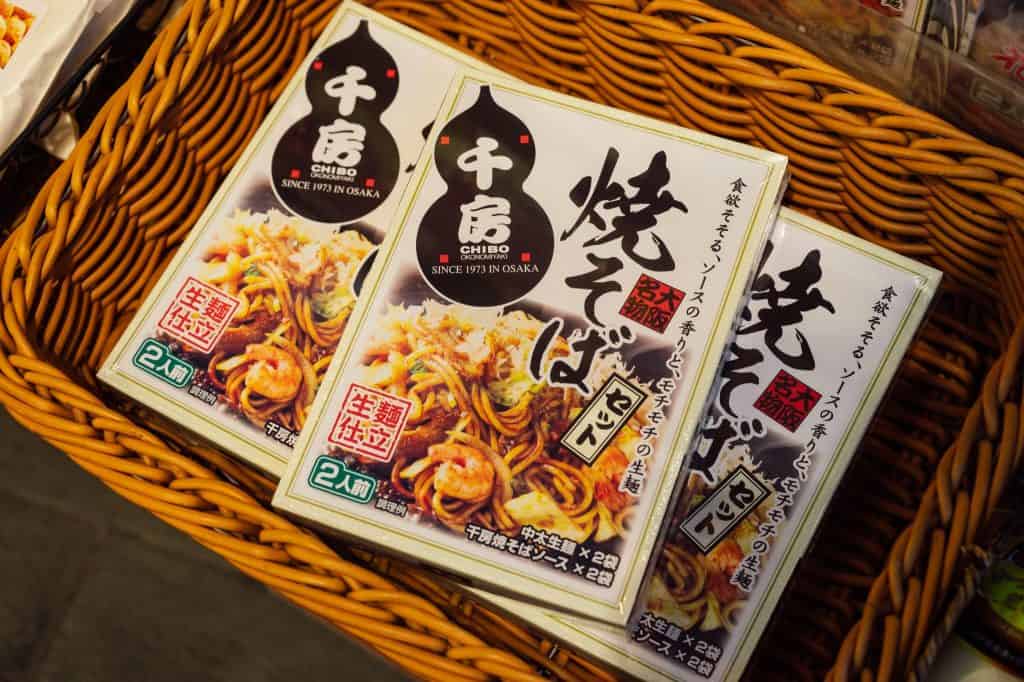
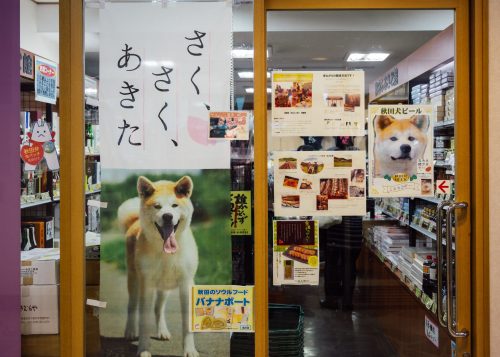
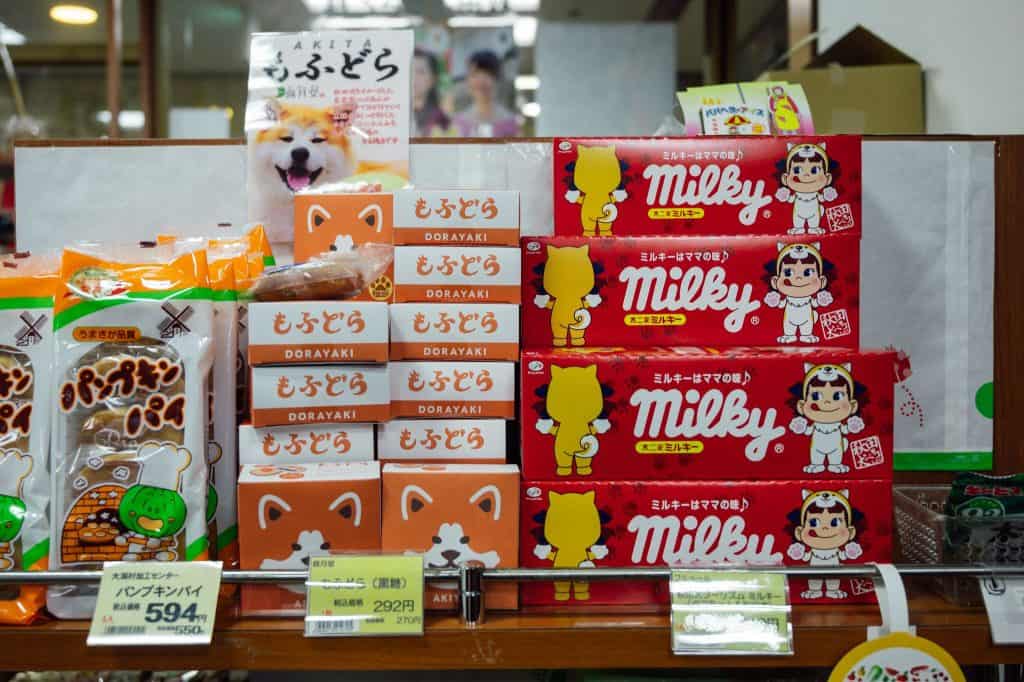
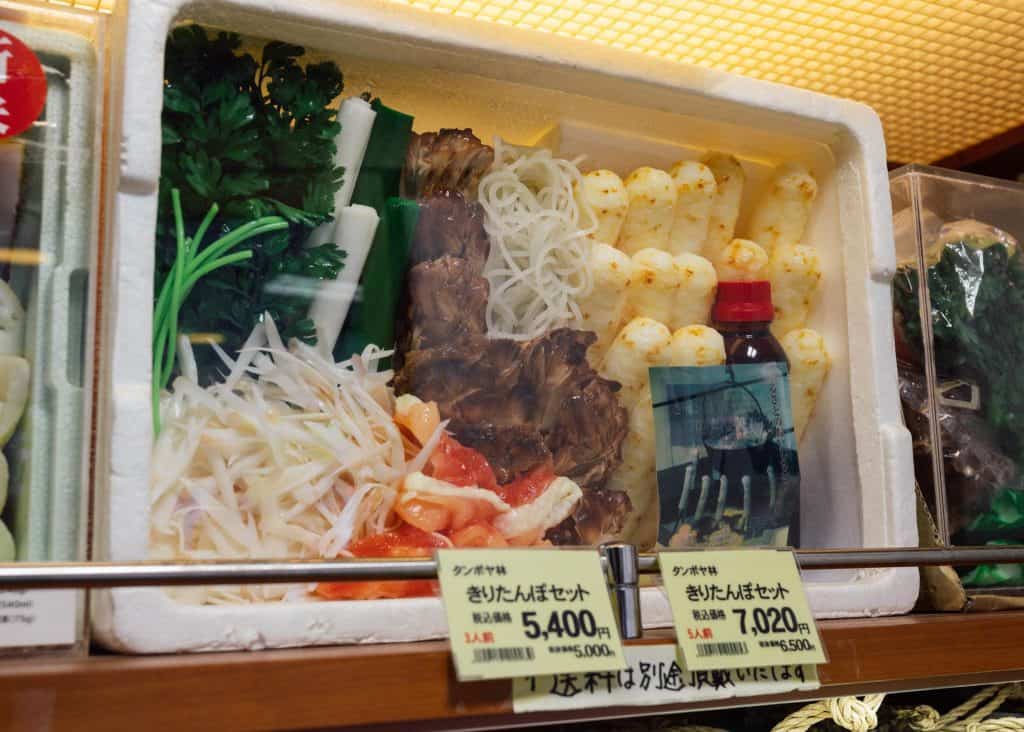
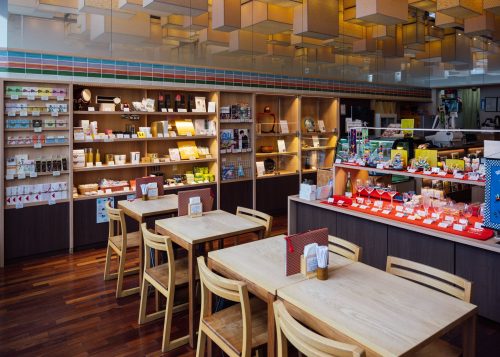
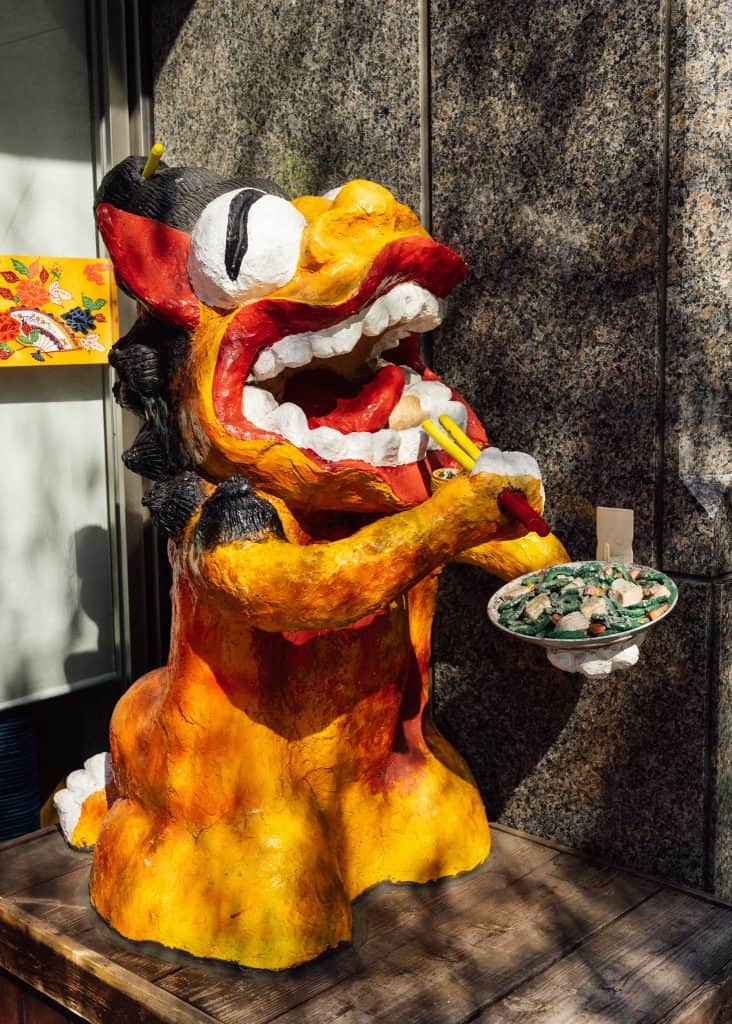
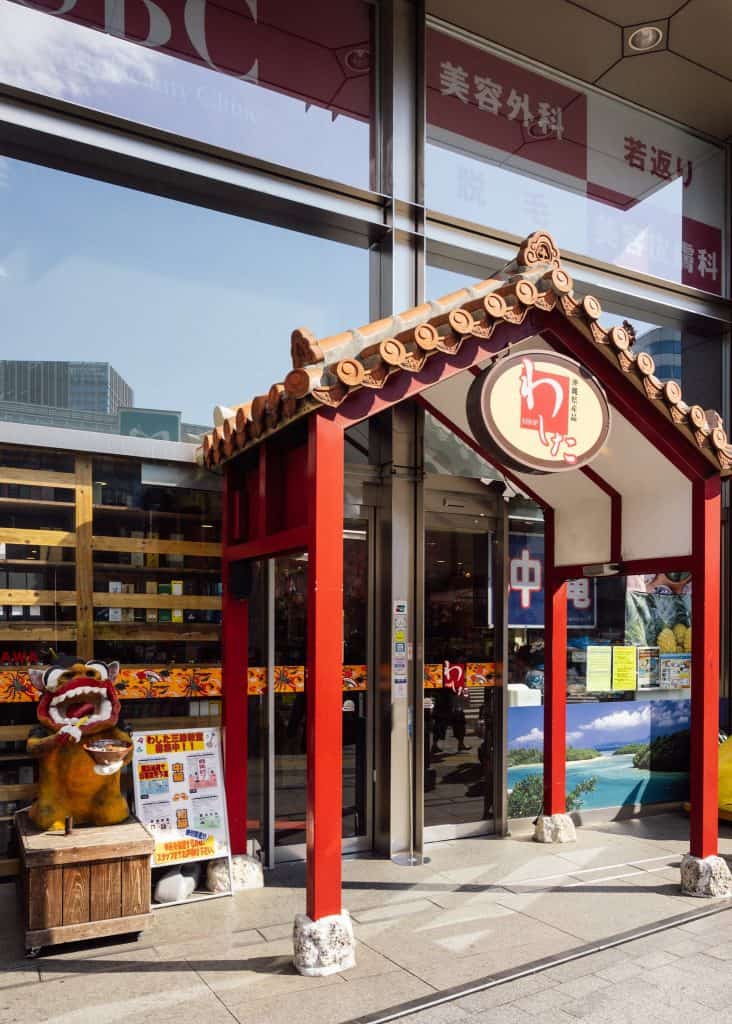
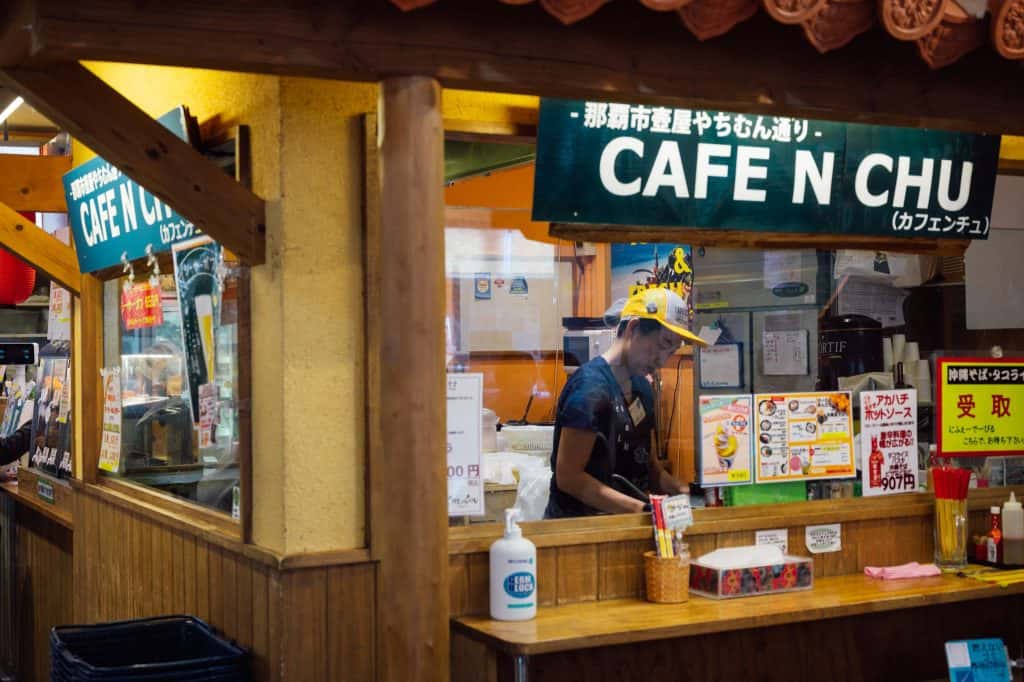
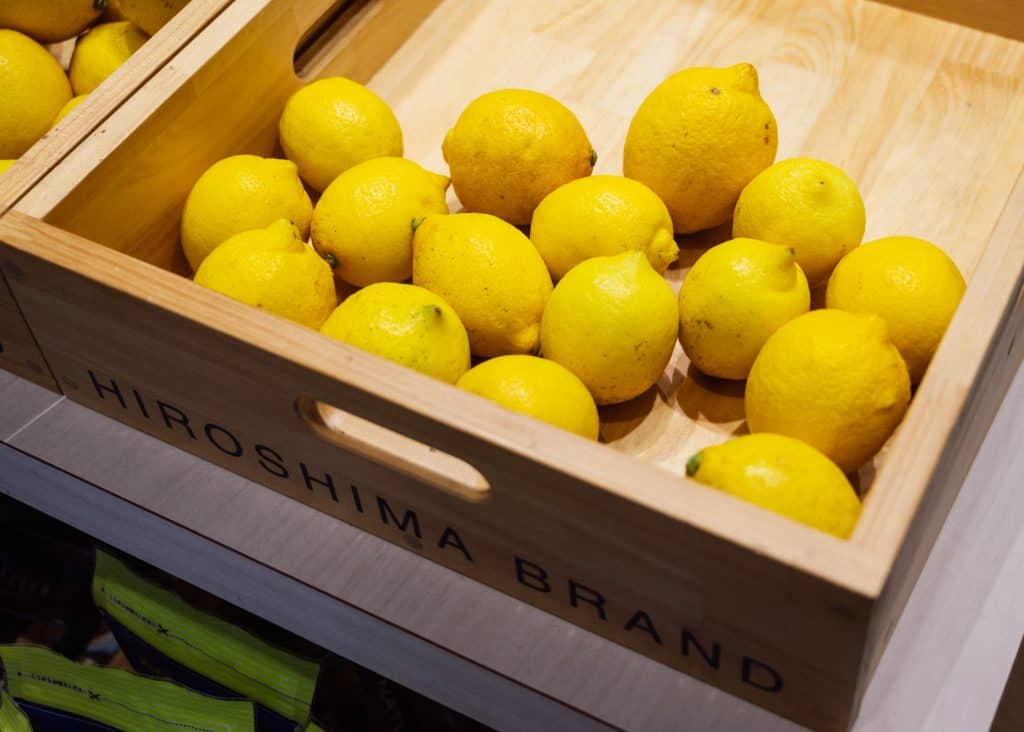
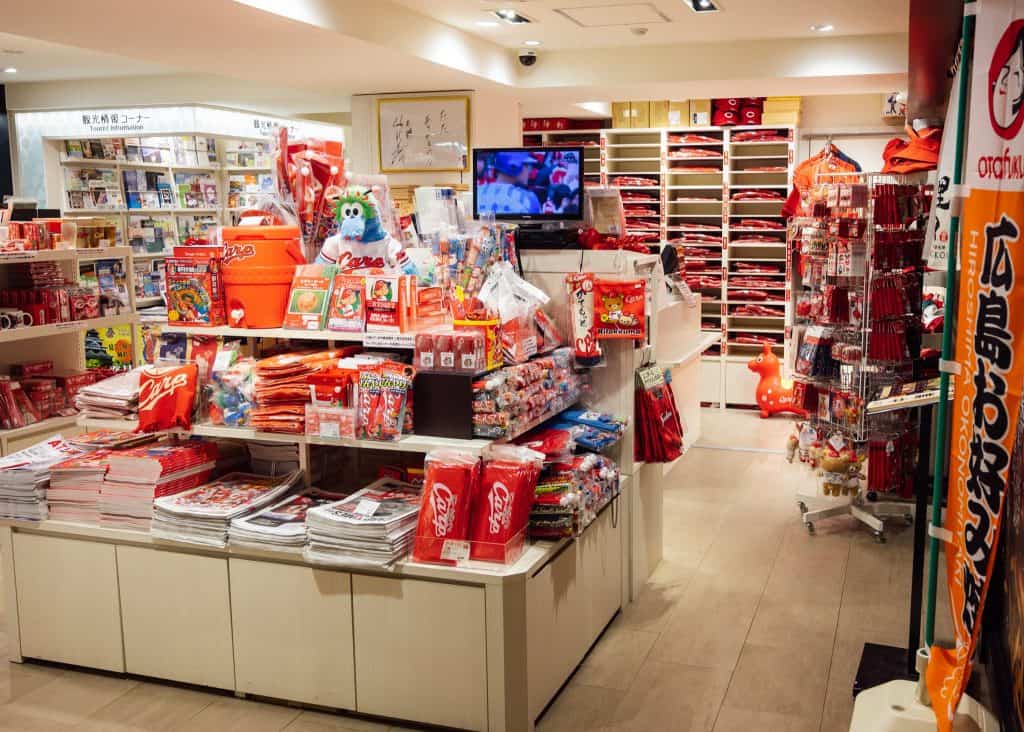
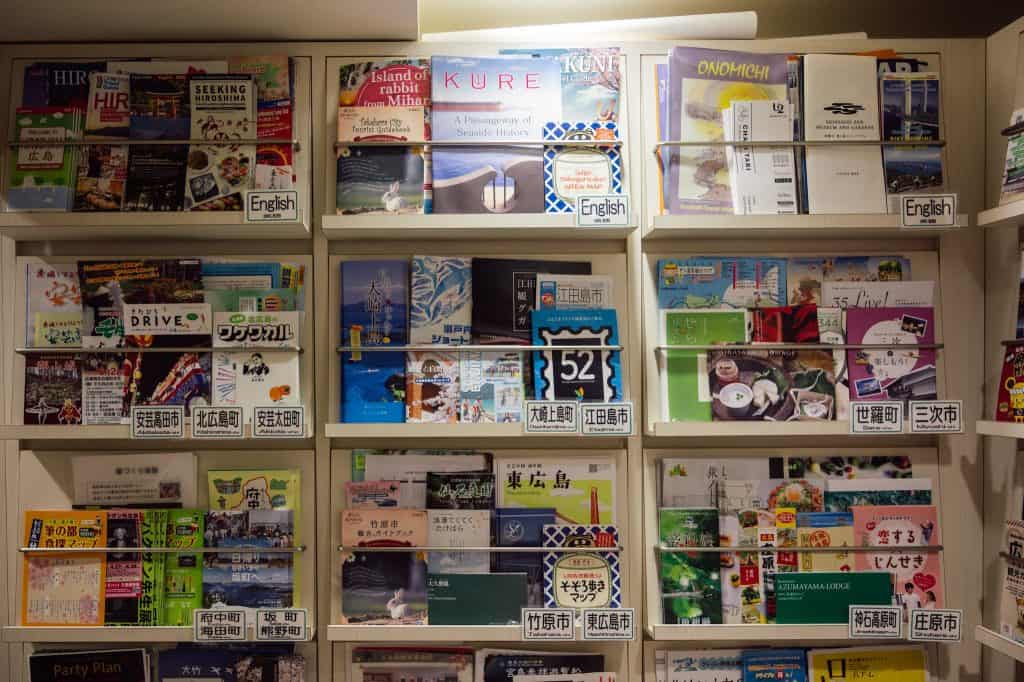
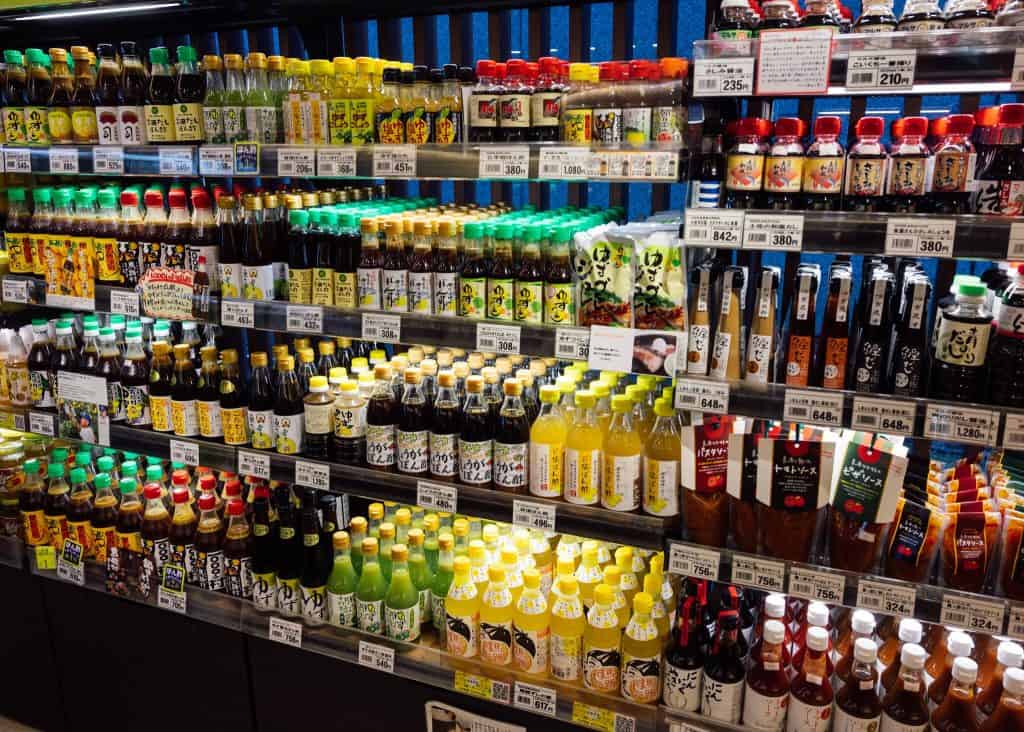
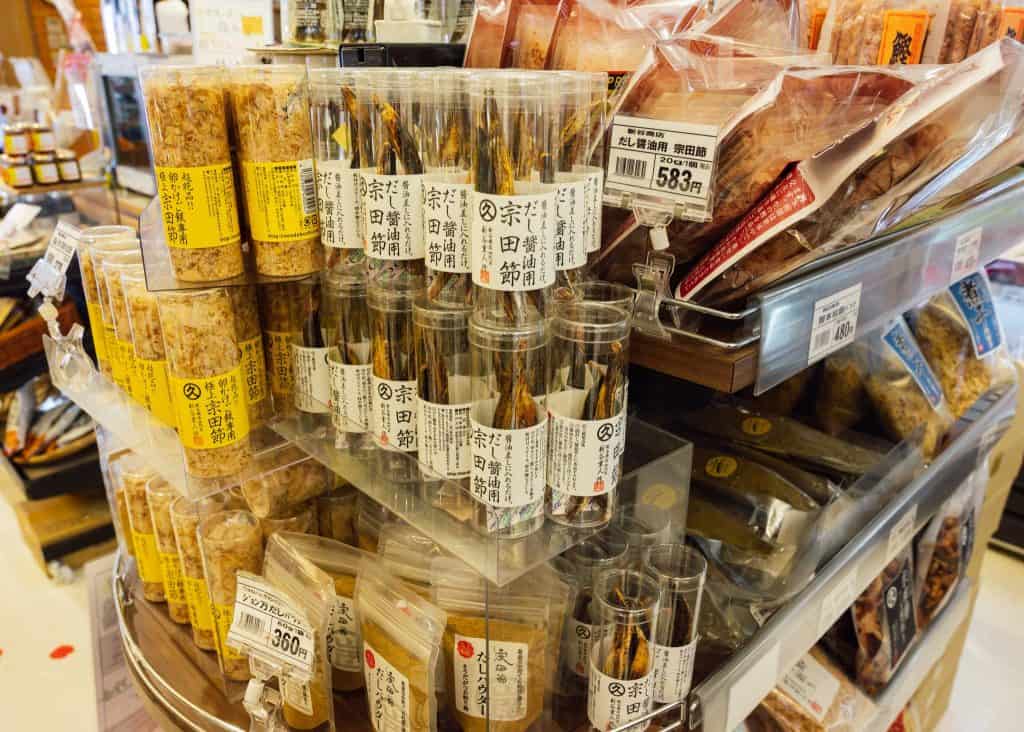
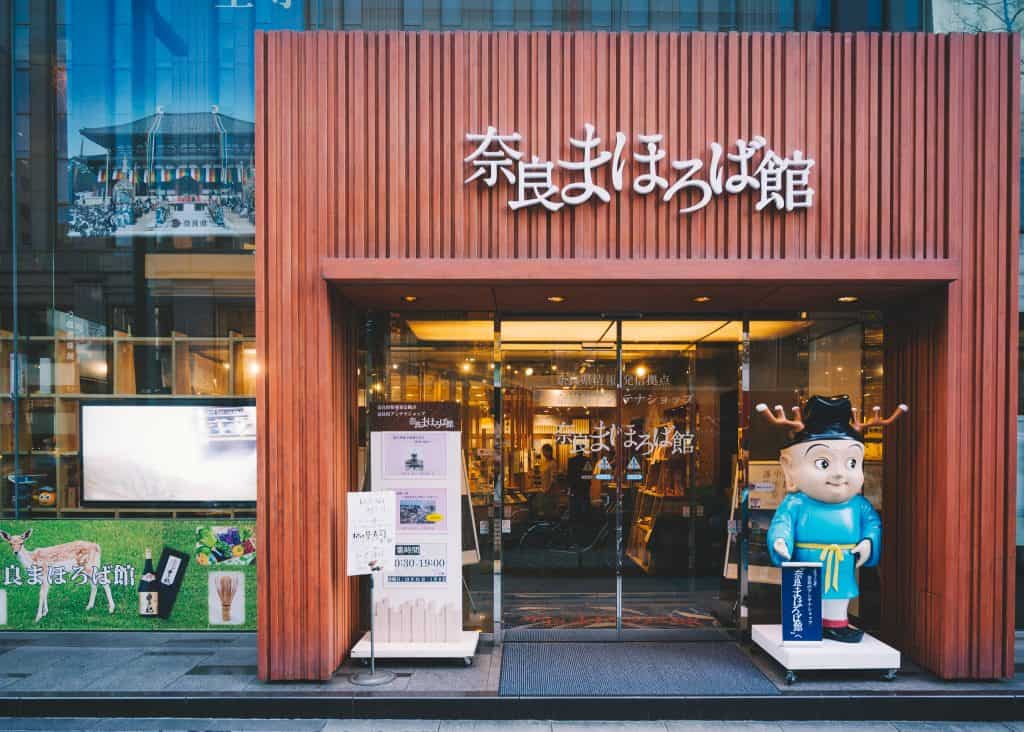
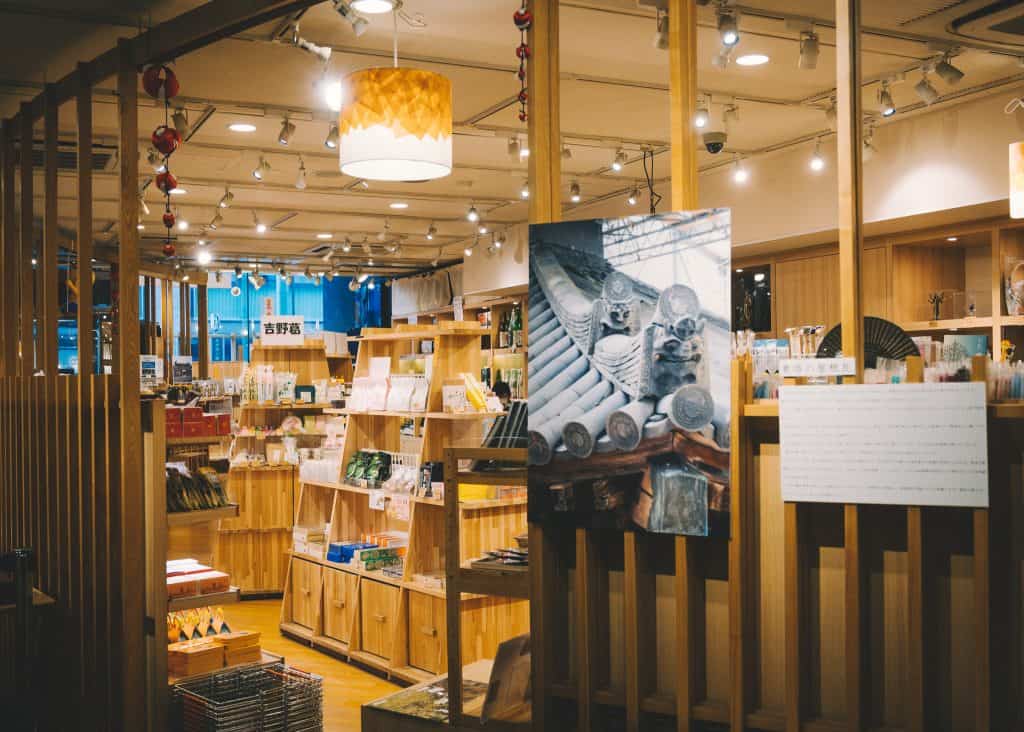
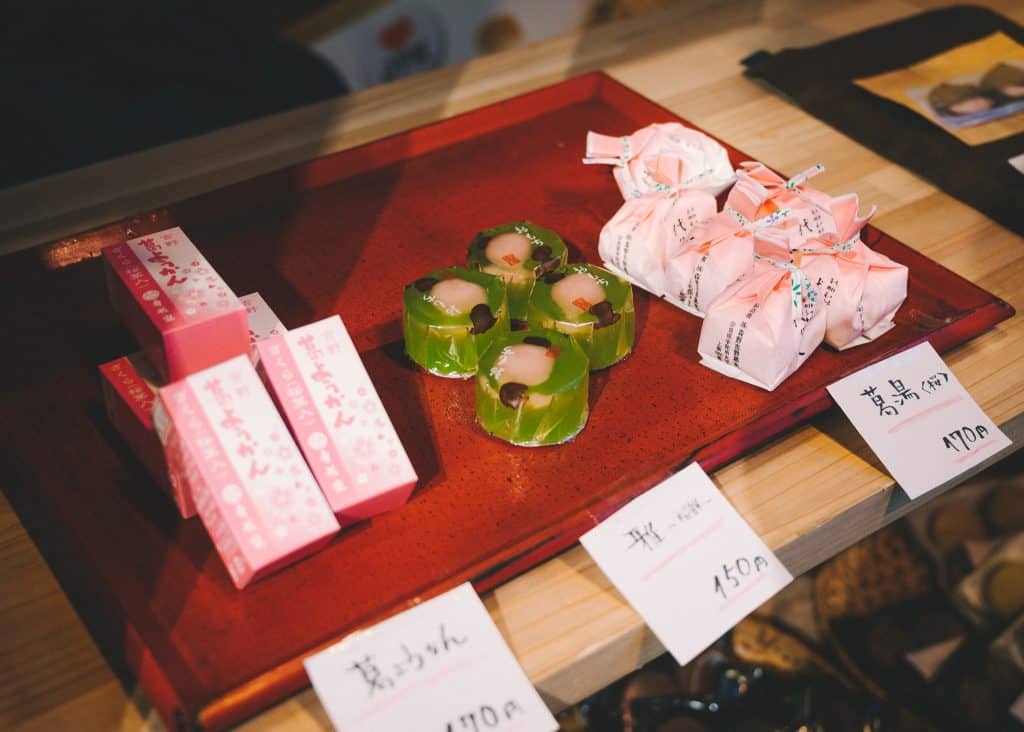
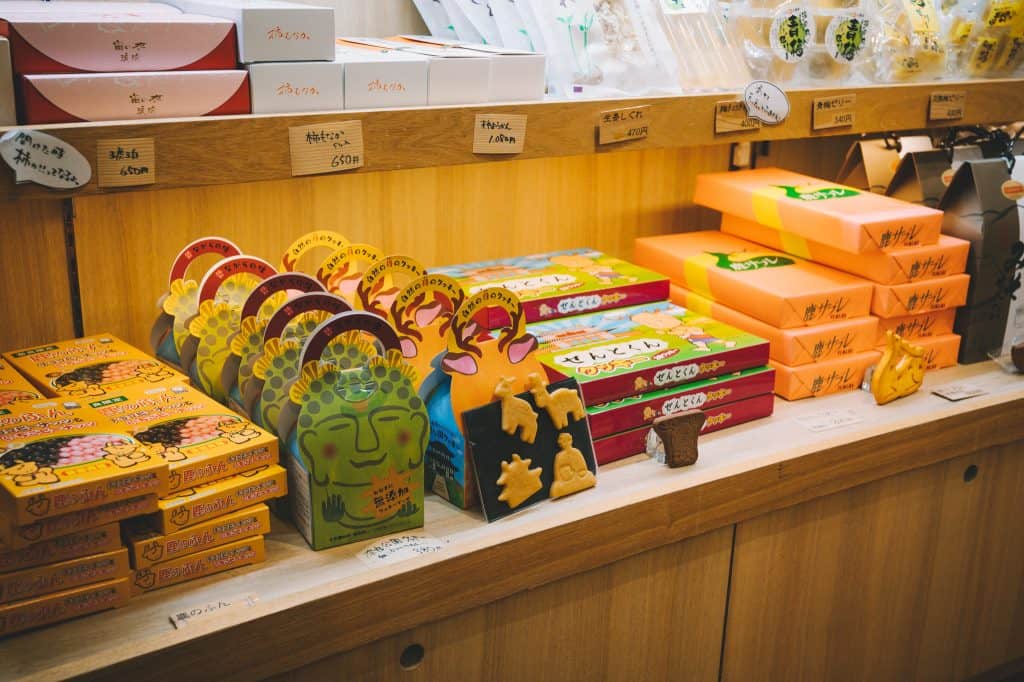
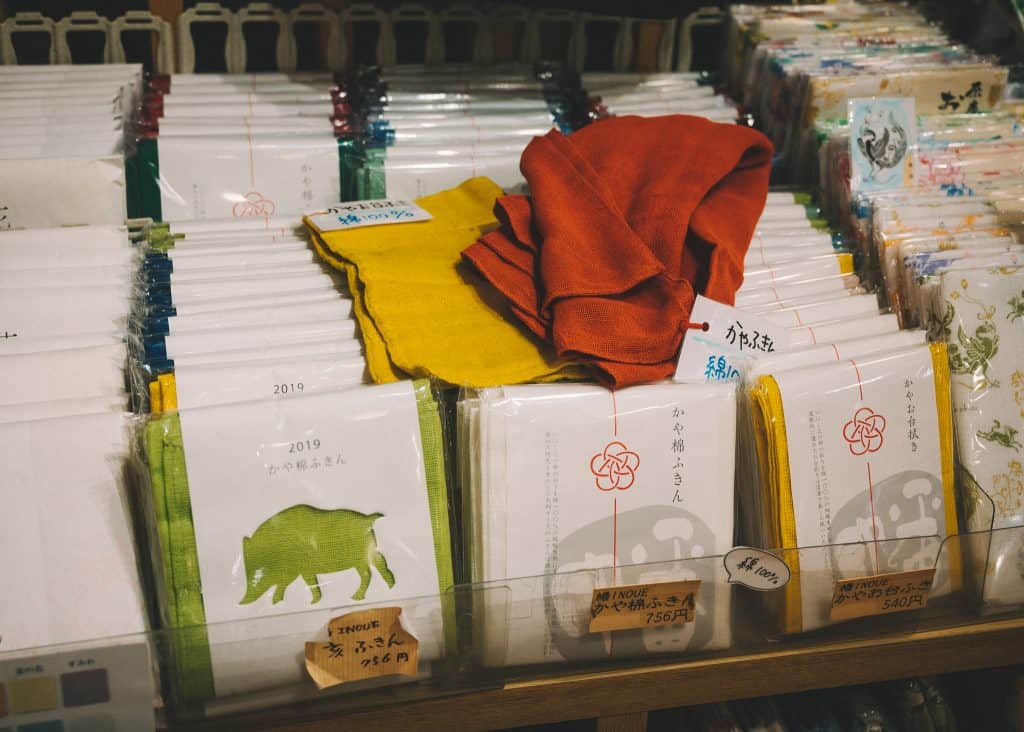
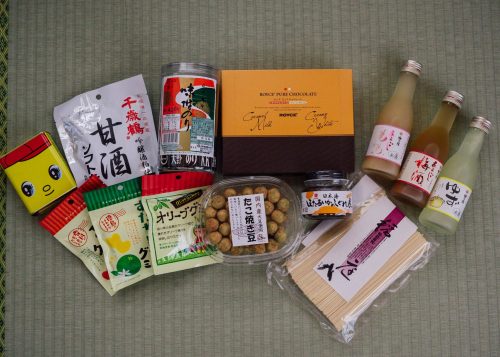
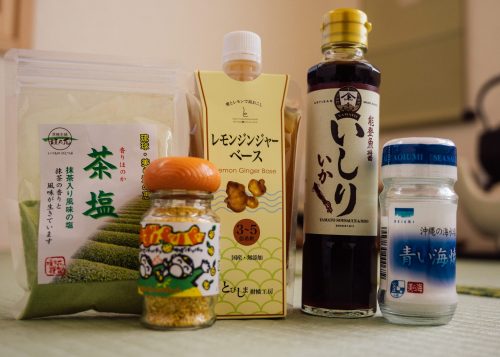
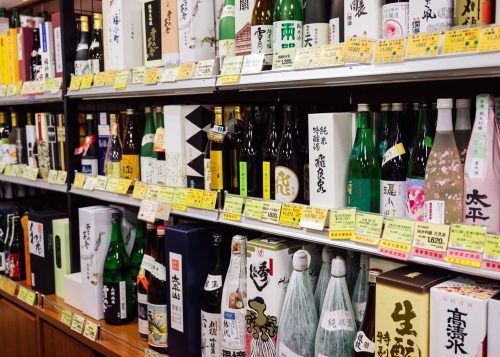
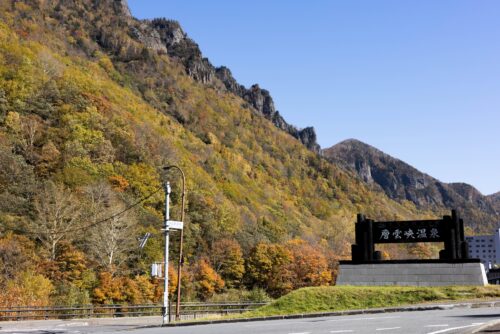
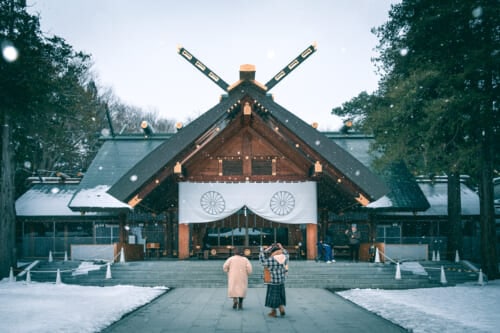
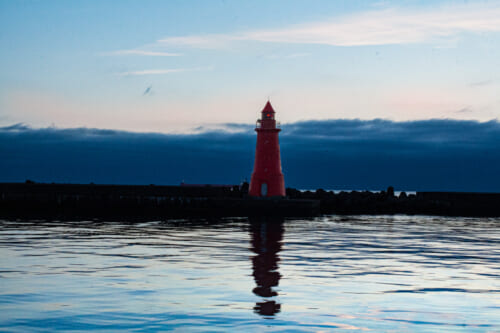
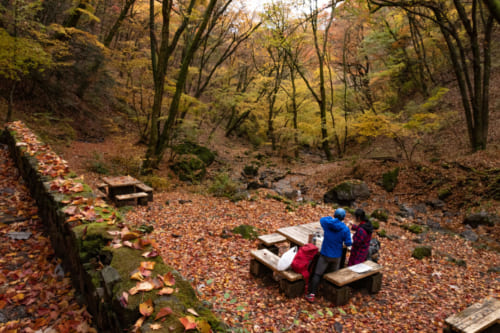

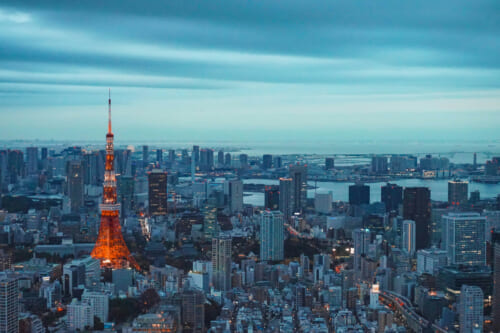
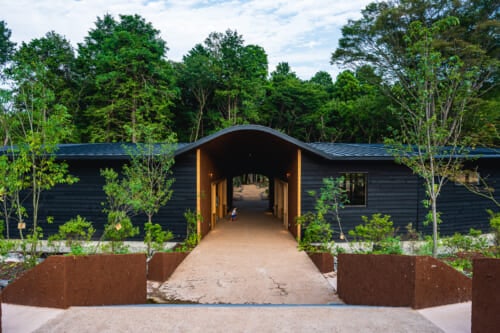

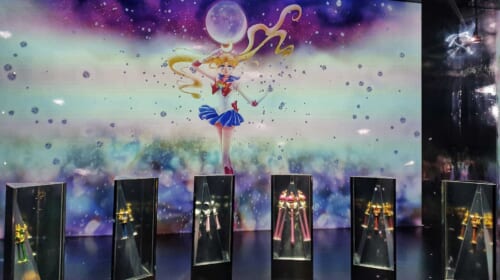



No Comments yet!